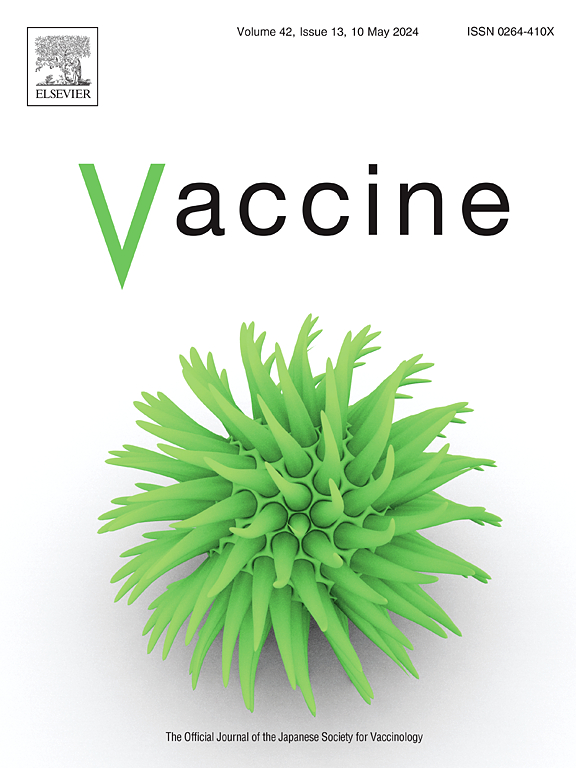全长TprC变异免疫诱导对梅毒螺旋体重复蛋白家族表面暴露的表位的广泛反应,并在兔梅毒模型中具有部分保护作用
IF 4.5
3区 医学
Q2 IMMUNOLOGY
引用次数: 0
摘要
一种有效的梅毒疫苗可以帮助目前的控制措施,以减少感染的发生率。梅毒病原体梅毒螺旋体的保护性免疫。苍白球绦虫(T. pallidum),通过吞噬作用清除病原体,支持有效候选疫苗免疫应引起宿主-病原体界面关键表位的偶声抗体。T. pallidum repeat (Tpr)蛋白是推测的β-桶状外膜孔蛋白,具有10个预测的细胞外环。在这里,我们用TprC全长抗原、TprD2蛋白或TprK保守的nh2末端区域的三种重组变体的组合免疫了三组8只兔子,后者抗原已经知道在免疫兔中诱导不完全保护。与未免疫的对照组相比,用三种TprC变异体或TprK片段免疫的家兔表现出原发性发病减少,攻击部位的密螺旋体负担减轻,病原体向淋巴结传播受限。单独接种TprD2不能产生可比的结果。免疫引起了对TprC和TprK的强烈的体液和细胞反应,功能分析支持诱导调理抗体。使用TprC和tprk特异性合成肽和噬菌体免疫沉淀测序进行表位定位,确定了一个高度反应性序列的子集,并证明了对多个Tpr相似物中预测的表面暴露表位的免疫,这解释了攻击后测量的显着的,尽管不完整的保护。这些数据表明TprC和TprK是梅毒候选疫苗,并强调了其保护作用的几个相关因素,值得进一步研究。本文章由计算机程序翻译,如有差异,请以英文原文为准。
Immunization with full-length TprC variants induces a broad response to surface-exposed epitopes of the Treponema pallidum repeat protein family and is partially protective in the rabbit model of syphilis
An effective vaccine against syphilis could aid current control measures to reduce the incidence of infection. Protective immunity from the syphilis agent, Treponema pallidum subsp. pallidum (T. pallidum), is associated with pathogen clearance by phagocytosis, supporting that immunization with an effective vaccine candidate should elicit opsonic antibodies to key epitopes at the host-pathogen interface. The T. pallidum repeat (Tpr) proteins are putative β-barrel outer membrane porins with ten predicted extracellular loops. Here, we immunized three groups of eight rabbits with either a combination of three recombinant variants of the full-length TprC antigen, the TprD2 protein, or the conserved NH2-terminal region of TprK, with the latter antigen already known to induce incomplete protection in immunized rabbits. Compared to unimmunized controls, rabbits immunized with the three TprC variants or the TprK fragment exhibited attenuated primary chancres, reduced treponemal burden at the challenge sites, and limited pathogen dissemination to lymph nodes. Immunization with TprD2, alone did not produce comparable results. Strong humoral and cellular responses against TprC and TprK were elicited by immunization, and functional analyses supported the induction of opsonizing antibodies. Epitope mapping performed using TprC- and TprK-specific synthetic peptides and phage immunoprecipitation-sequencing identified a subset of highly reactive sequences and demonstrated immunity to predicted surface-exposed epitopes across multiple Tpr paralogs, which explained the significant, albeit incomplete protection measured post-challenge. These data advance TprC and TprK as syphilis vaccine candidates and highlight several correlates of their protection that deserve further examination.
求助全文
通过发布文献求助,成功后即可免费获取论文全文。
去求助
来源期刊

Vaccine
医学-免疫学
CiteScore
8.70
自引率
5.50%
发文量
992
审稿时长
131 days
期刊介绍:
Vaccine is unique in publishing the highest quality science across all disciplines relevant to the field of vaccinology - all original article submissions across basic and clinical research, vaccine manufacturing, history, public policy, behavioral science and ethics, social sciences, safety, and many other related areas are welcomed. The submission categories as given in the Guide for Authors indicate where we receive the most papers. Papers outside these major areas are also welcome and authors are encouraged to contact us with specific questions.
 求助内容:
求助内容: 应助结果提醒方式:
应助结果提醒方式:


